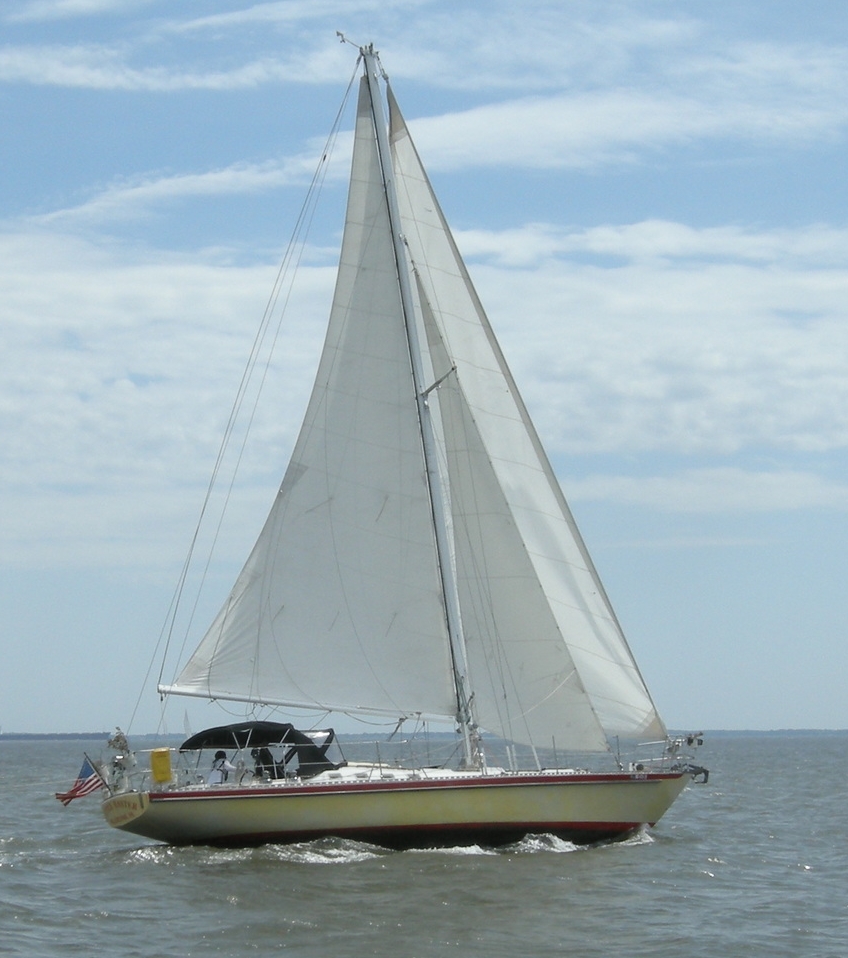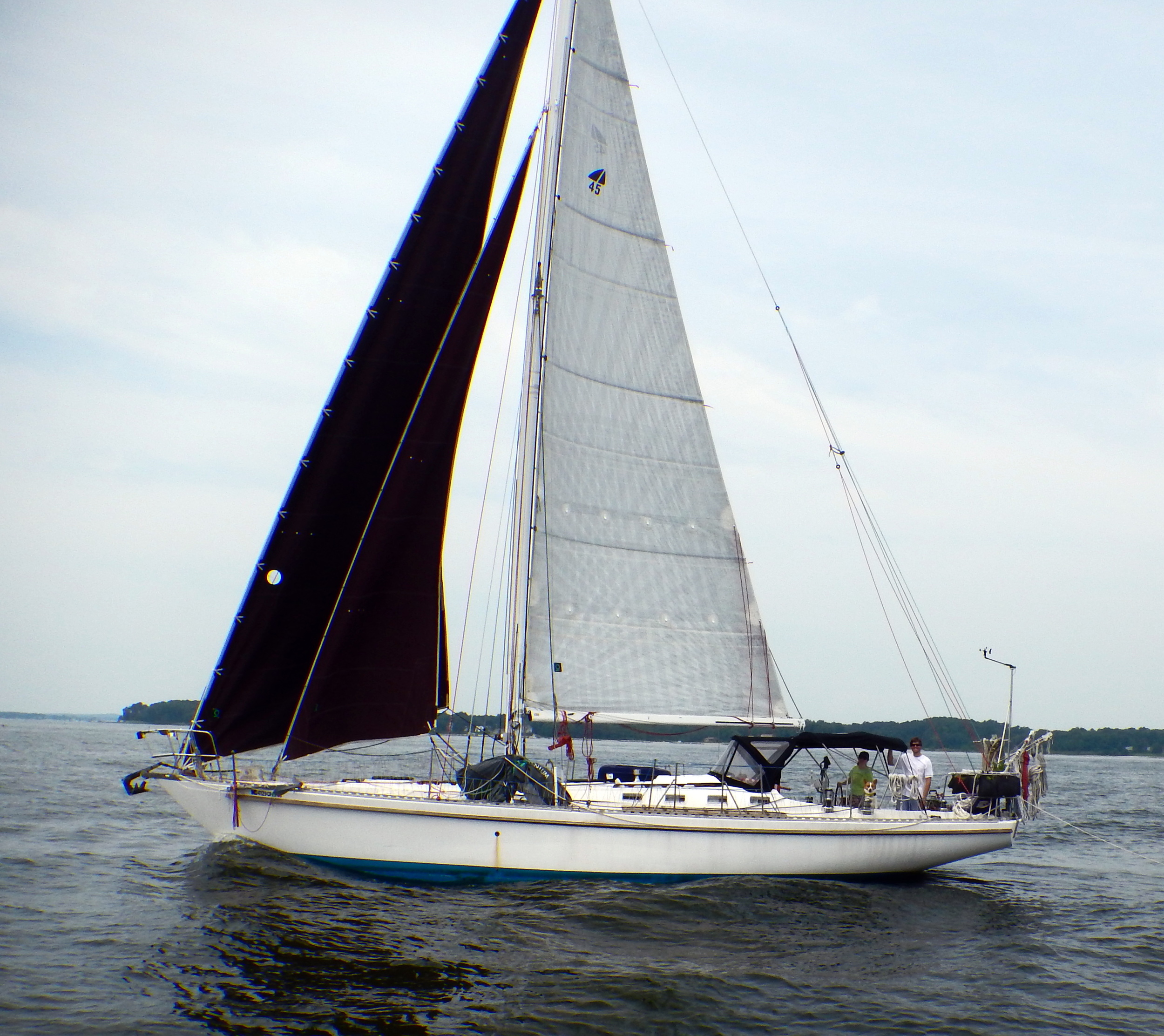At dawn, we were already away from the pier! The entrance to Deltaville would be nearly impossible to navigate by sail, and I didn't want to consume much of the battery bank motoring through its twisty and curvy channel, so we left at peak high tide so we wouldn't have to worry about currents and have a little more leeway with the keel.
We slowly, but steadily electrically motored out of the channel and raised the sails. At first, the wind was extremely light, but that soon changed. The forecast for today was calling for stronger winds in the late morning, so I raised the Jib instead of the Drifter in anticipation of the winds to come. We were once again on our way out to the ocean!
As the winds built, we began sailing along making wonderful headway, almost as wonderfully as we had before we fouled the drifter sheet. Then, the winds all disappeared. We raised the drifter and waited as we slowly ghosted along on the other tack heading towards where we planned to anchor for the night.
We arrived at New Point and dropped the hook. I was exhausted as I was starting to come down with a cold, so as soon as I knew the anchor was set, I went to sleep. I hadn't flaked or tied any of the sails up even though it looked like a storm was approaching.
A few hours after I had gone to sleep, Maddie woke me because the storm was almost upon us and I needed to tie everything down. By the time I made it on deck, the winds had picked up and the sails were flapping around like flags, causing extra windage and unneeded stress on the anchor. I quickly lashed the sails to the deck and boom, but didn't have time to get a snubber installed on the anchor rode.
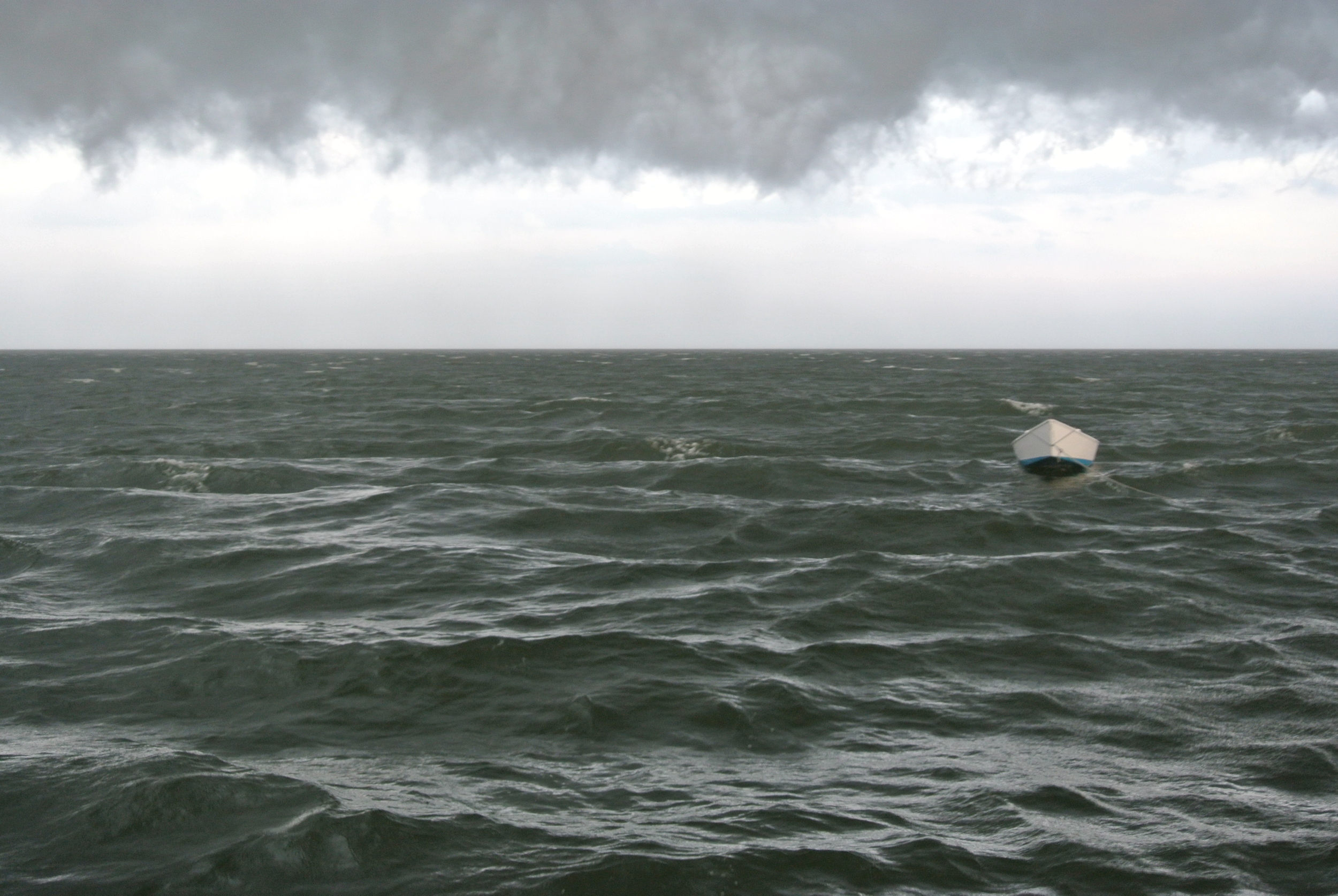
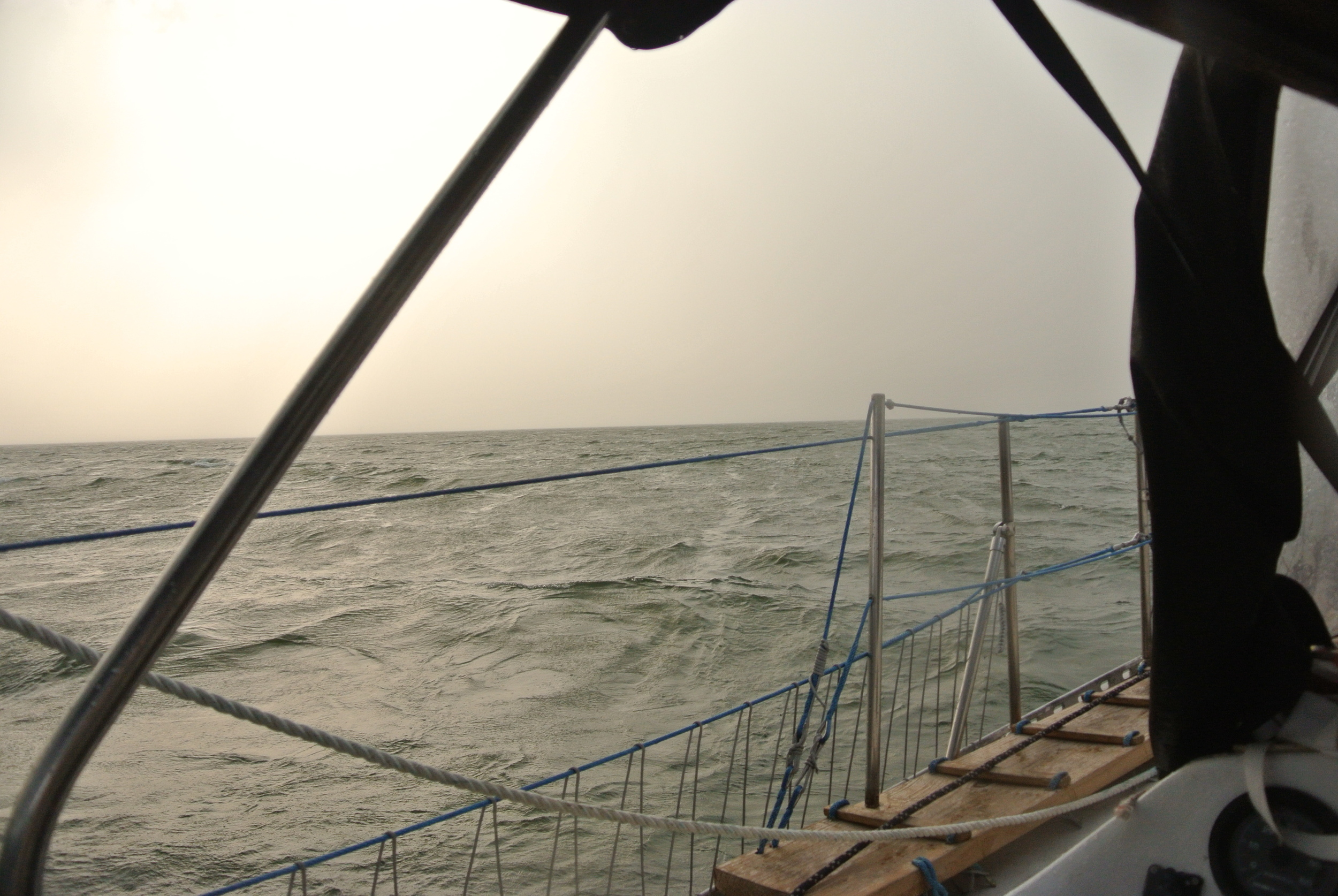

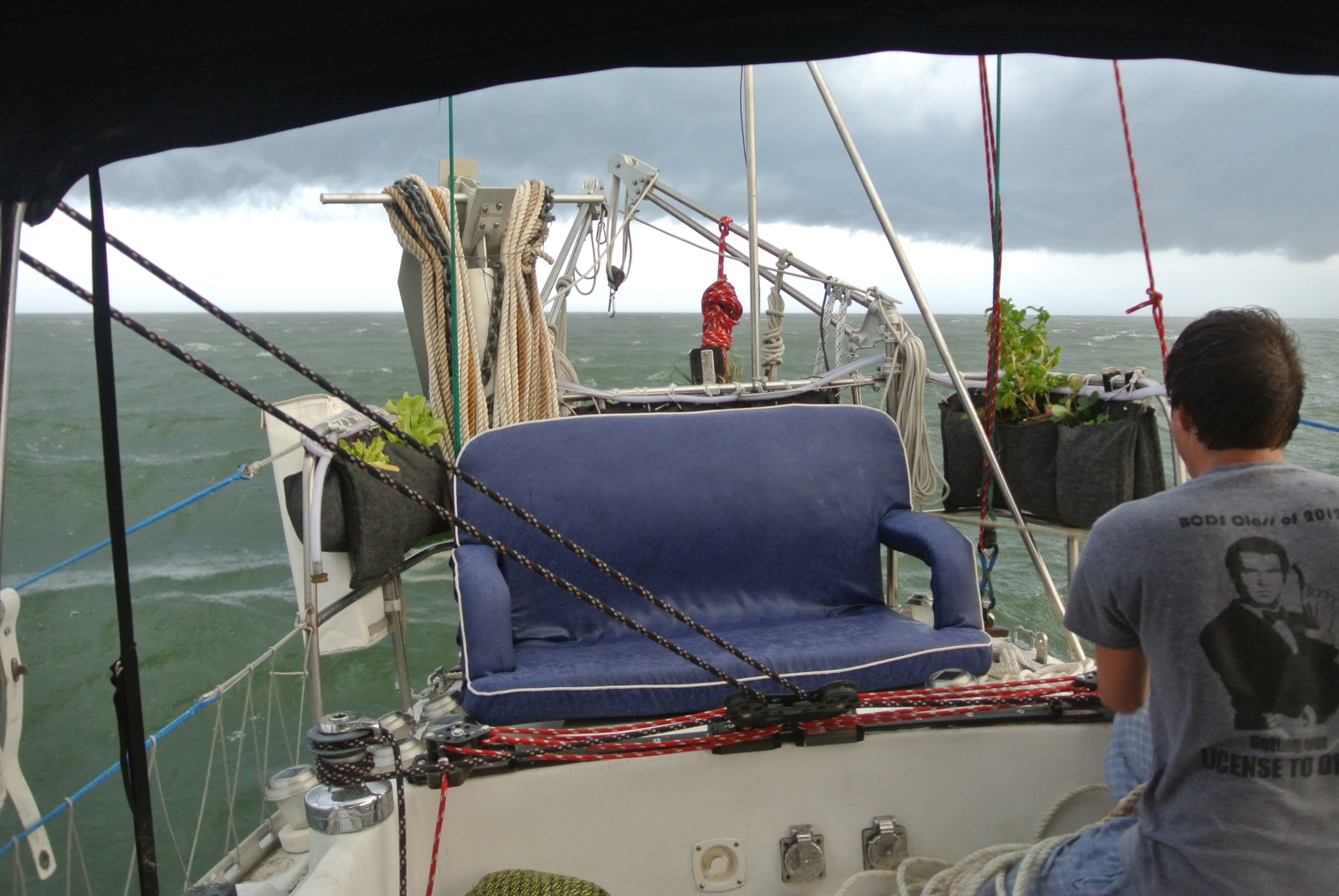
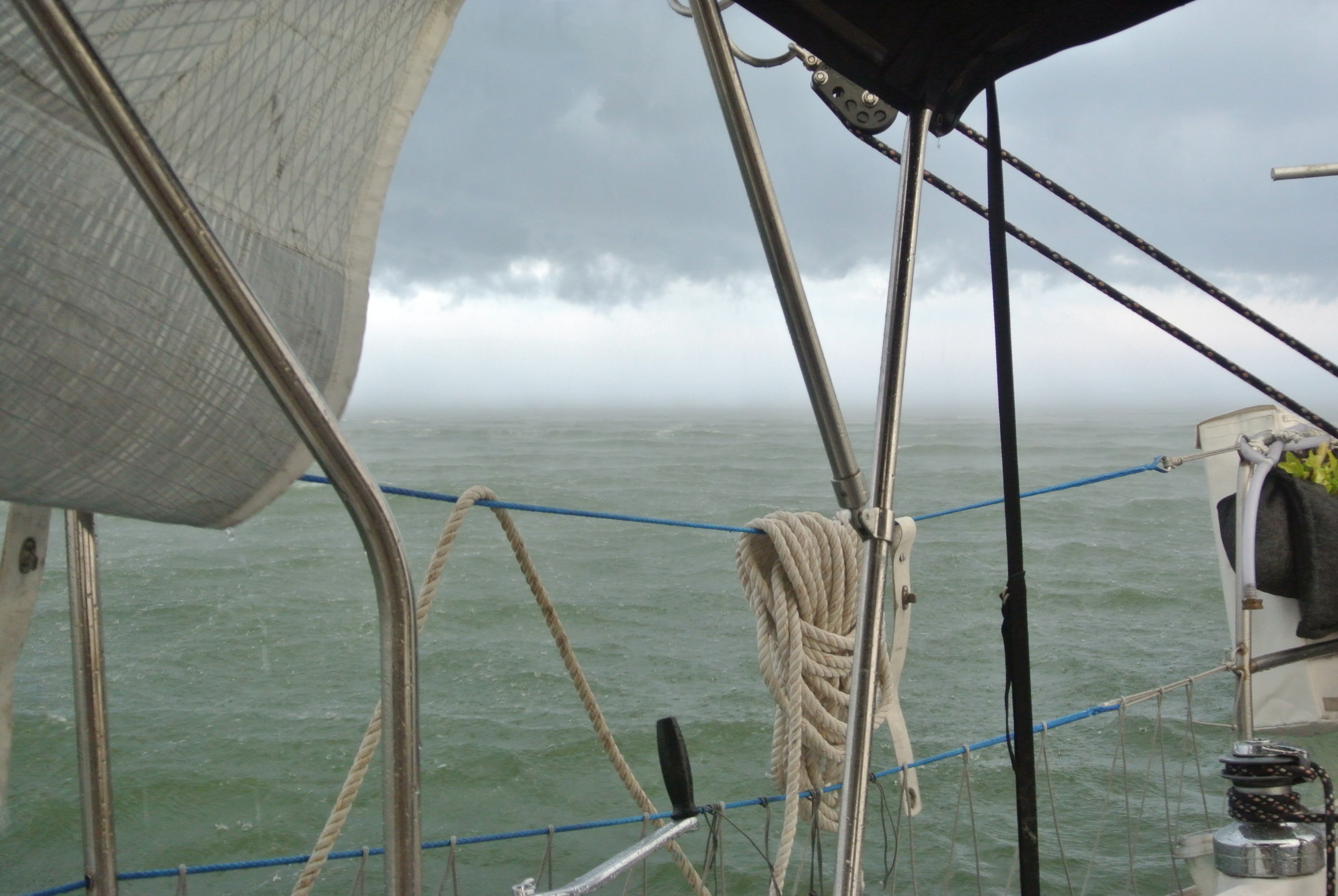
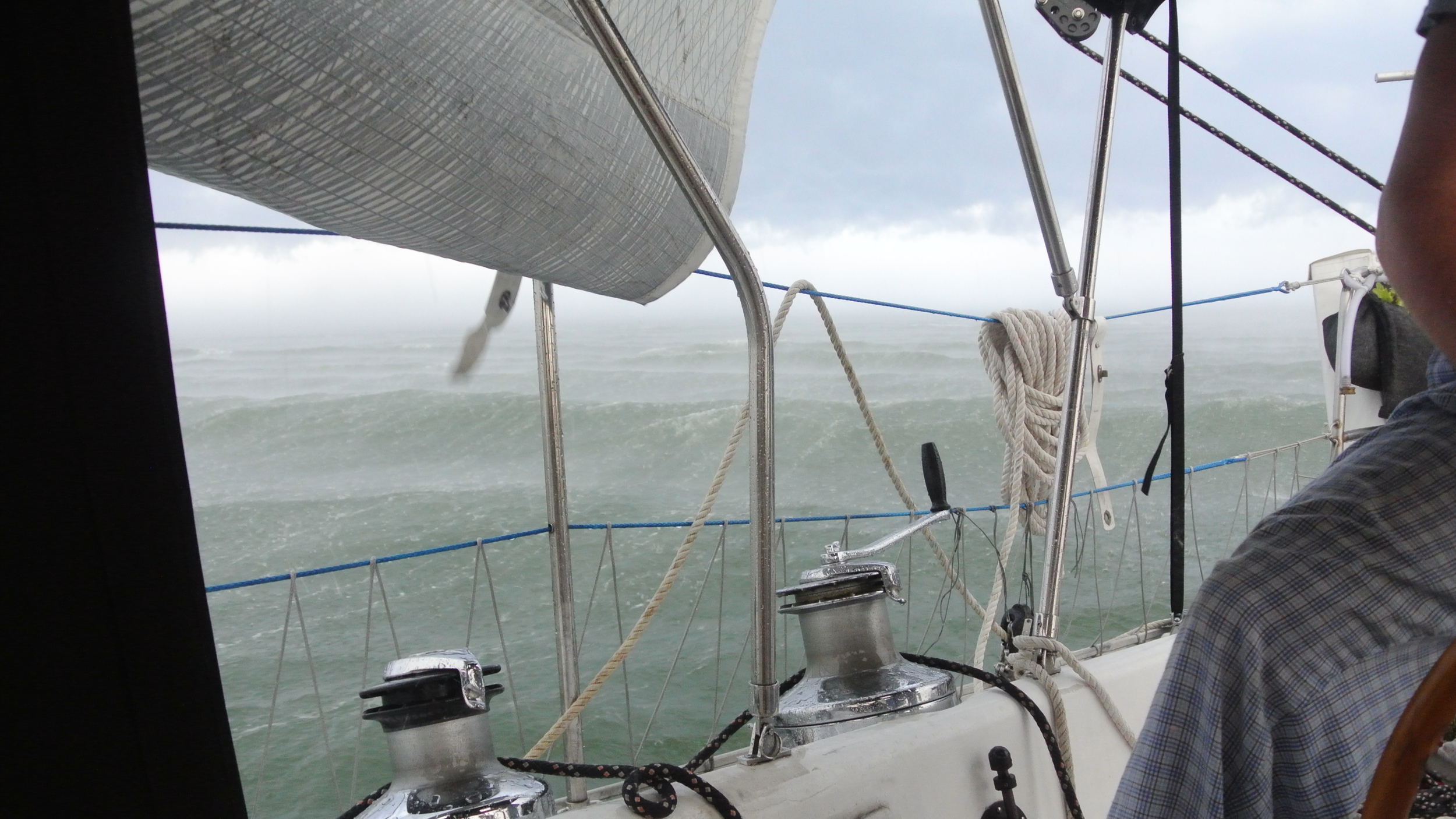
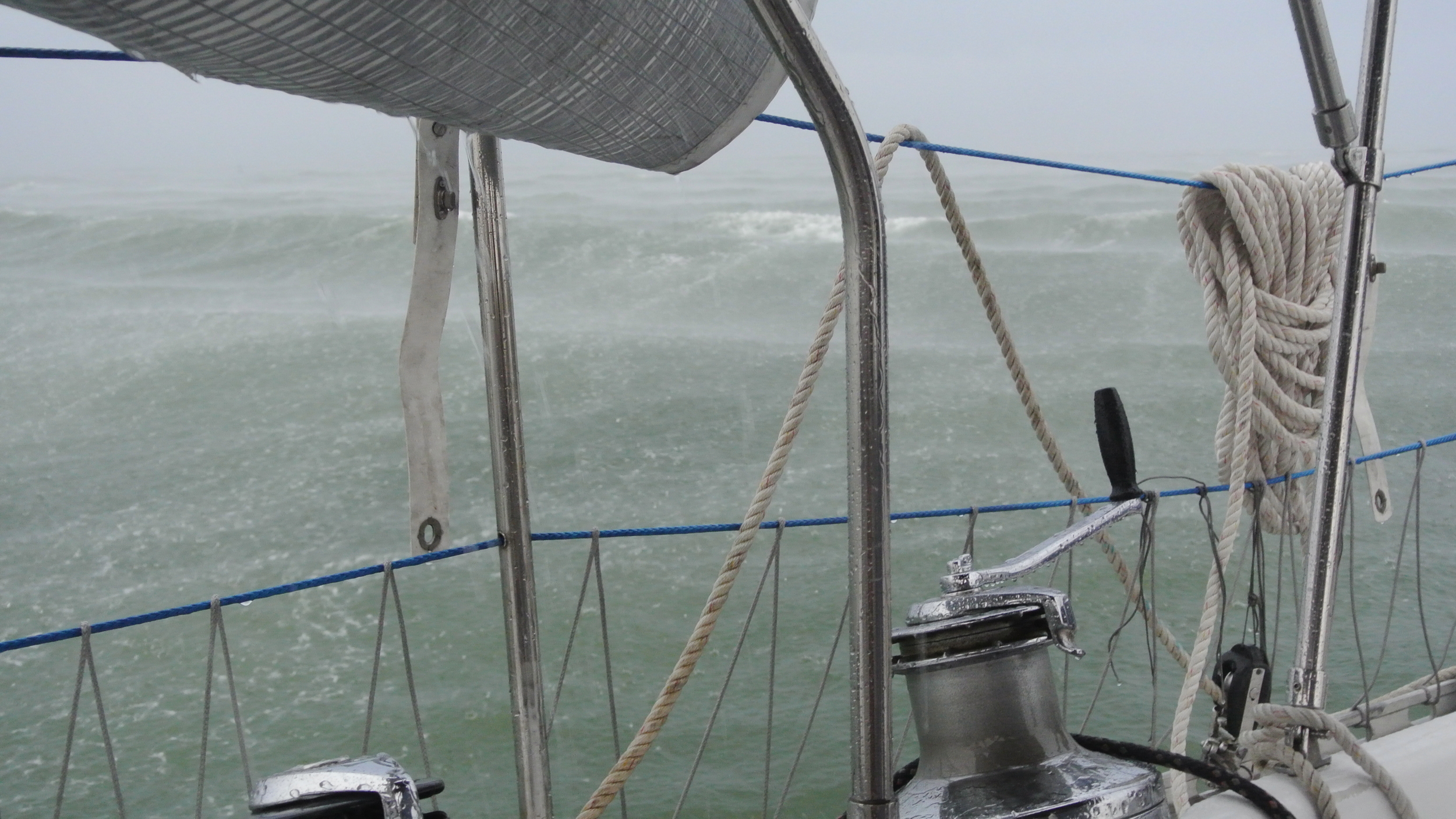
I stood at the helm trying to steer the boat with the current to keep our bow into the wind, as I was worried the chain would come out of the roller and stress the forestay again.
A wall of rain descended on us and visibility was reduced to just past the boat. We were in an eerie pale pink world as the suns rays were refracted by all of the moisture in the air. We found ourselves in a little world where we had no visibility and relied entirely on our anchor to keep us in place. I had let out more chain as the storm began, so with all 300 feet of chain released, there was nothing else we could do but wait it out. Luckily, the anchor held during the ordeal as winds picked up to 52 knots sustained.
I do have to give credit to Maddie who stayed calmer than I during the squall as she took pictures of the storm while we waited for it to pass.





